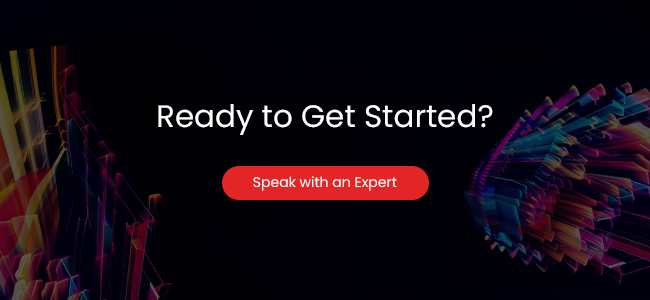Quality Assurance is no longer a post-development task. It has become a strategic function that drives speed, trust, and business agility. Today, traditional QA can’t keep up with cloud-native systems and rapid release cycles.
Organizations are taking notice that around 40% of the organizations now spend over 25% of their IT budgets on QA, and 42% already use AI in operations. Quality is no longer optional; it’s a competitive edge.
Three forces are powering this shift: AI, cloud, and human expertise. AI accelerates testing and predicts defects. Cloud enables scalable, real-world environments. Human insight ensures context, compliance, and confidence.
QA is now embedded into every phase of development. Companies that align technology with judgment will define the next era of enterprise quality.
History of QA Transformation
Quality Assurance has come a long way since it first checked for errors by hand in the 1960s and 1970s. In those years, quality assurance was mainly reactive. At the end of the software development process, testers checked for errors after most of the work had already been done. This method typically caused delays, greater expenses, and products that didn’t meet expectations.
The 1990s saw a big change with the rise of standardized testing frameworks and automation. JUnit and Selenium are two tools that helped QA teams find bugs earlier and work more quickly. This was also when QA started to be seen as more than just a last checklist. It became a collaborator in development.
Agile and DevOps emerged in the 2000s. By collaborating with developers in fast release cycles, QA became closer to the center of the software lifecycle. Because of Continuous Integration and Continuous Deployment, testing had to be faster, smarter, and connected than ever.
QA is once again at a crossroad today. Testing is constantly being modified by cloud computing, artificial intelligence, machine learning, and the means of what constitutes Quality. A move to intelligent automation and partnership between QA indicates that quality is no longer an act but a way of life.
The Role of Cloud Computing in Shaping the Future Of QA
The approach to software development, deployment, and testing of software in business has been altered by Cloud Computing. Compared to traditional systems, the cloud gives QA teams greater flexibility, scalability and speed. This is the manner in which it is shifting the tomorrow of QA:
Scalability on Demand
QA teams may quickly change the size of test environments to fit the project’s needs. This eliminates hardware limits and lets you test on a large scale without paying for more infrastructure.
Access to Real-World Environments
By using cloud infrastructures, testers can stimulate the use of other operating systems, internet browsers, and devices. This will ensure that the applications are tested in practical conditions, providing a larger number of users can depend upon them.
Continuous Testing in CI/CD Pipelines
When you use cloud-based tools, tests can run automatically during development and development cycles. This makes continuous integration and delivery easier and speeds up the release process.
Collaboration Across Teams
Global QA Teams may exchange tools, environments, and results in real time. Cloud-native solutions make testing things across several locations easier and speed up feedback loops.
Cost Efficiency
Companies can switch to a pay-as-you-go arrangement instead of keeping up with expensive test infrastructure. This keeps up with business needs while making QA less expensive.
How AI and Machine Learning are Transforming the Testing Landscape
In QA, AI, and ML are no longer interesting buzzwords. They are becoming the active transformers in the planning, execution, and enhancement of tests. What AI and ML could do to you is:
Predictive Analysis for Defect Detection
The AI algorithms can review historical information and find where the most errors occur. This assist testers in prioritising the most important areas and ensures that everything is tested.
Self-Healing Test Automation
Scripts that use machine learning adapt automatically when apps do. This reduces the time spent correcting faulty test cases and ensures that automation stays strong in changing contexts.
Intelligent Test Case Generation
AI tools can automatically build test cases based on the application’s needs and how users usually act. This shortens test cycles and increases coverage.
Smarter Regression Testing
AI finds the parts of the code that are most affected instead of testing everything again. This focused method cuts down on testing time while keeping accuracy.
Enhanced Test Data Management
ML algorithms help create realistic test data while ensuring data privacy regulations are followed. This improves testing without putting sensitive information at risk.
Continuous Learning from Feedback Loops
AI systems use data from prior tests to improve future tests, making QA a proactive and changing job.
The Human Element: Collaboration Between QA and AI Professionals
However, AI may transform QA, it cannot substitute the knowledge of people. One thing that determines the future of QA is the ability of people and machines to collaborate with one another. This is how that partnership appears to be:
Strategic Decision-Making
AI can provide insight, but it’s up to people to figure out what those insights mean for a firm. QA professionals ensure testing meets users’ needs and the organization’s goals.
Creativity and Critical Thinking
Machines are great at recognizing patterns and doing things automatically. People have intuition, creativity, and the capacity to look into edge scenarios that AI can’t easily guess.
Ethical and Compliance Oversight
AI can process test data or make choices automatically, so QA experts must ensure that privacy regulations, fairness standards, and security criteria are followed.
Training and Guiding AI Models
AI systems only get better when they have good data. Human testers provide models with context, check their outputs, and help them become better and more helpful over time.
Build Trust with Stakeholders
Customers and end users want to know what’s going on. QA professionals fill the gaps by explaining AI-driven results and ensuring people accept the process.
Why Select Tx for QA Transformation
Choosing the right QA partner becomes very important as businesses go to the cloud, AI, and Automation. TestingXperts has been at the forefront of guiding companies in strategic improvements to their testing strategies and measurable outcomes for years.
Expertise Across Industries
Tx has worked with clients in many fields, including banking, healthcare, retail, and telecom. Because it has worked in various industries and businesses, Tx can customize QA strategies to meet the needs of those industries and businesses.
End-to-End Testing Services
Tx covers all aspects of QA, from functional testing to performance, security, and automation. Businesses don’t need to work with multiple providers to solve distinct quality problems.
AI and Automation-Driven QA
Tx uses AI, ML, and smart automation to get the most out of test coverage, speed up cycles, and lower expenses. Clients get faster releases without having to give up quality.
Proven Track Record
Tx has repeatedly helped Fortune 500 and mid-sized businesses lower defect leakage, speed up time to market, and make customers happier.
Conclusion
QA has changed from doing things by hand to using technology like the Cloud, AI, and human understanding. The future of quality isn’t about technologies taking the place of people; it’s about working together to get things done quickly, reliably, and with trust.
Companies that act now will set the standard for new ideas and customer trust.
TestingXperts can help you make this change happen. Tx helps businesses gain a competitive advantage in terms of quality by offering AI-driven automation, scalable cloud testing, and end-to-end testing.
VP, Delivery Quality Engineering
Manjeet Kumar, Vice President at TestingXperts, is a results-driven leader with 19 years of experience in Quality Engineering. Prior to TestingXperts, Manjeet worked with leading brands like HCL Technologies and BirlaSoft. He ensures clients receive best-in-class QA services by optimizing testing strategies, enhancing efficiency, and driving innovation. His passion for building high-performing teams and delivering value-driven solutions empowers businesses to achieve excellence in the evolving digital landscape.
FAQs
Why is traditional QA no longer effective for modern software development?
Traditional QA was reactive, slow, and often disconnected from the development lifecycle. In today’s fast-paced environments with weekly or even daily release cycles, QA needs to be integrated, continuous, and technology-driven to keep up with the scale and complexity of modern systems.
How are companies justifying increased investments in QA?
Enterprises are recognizing QA as a strategic differentiator. Around 40% of large companies allocate more than 25% of their IT budgets to testing, while 42% have already adopted AI in business functions — indicating a clear shift towards intelligent, value-driven QA.
What are the biggest benefits of using cloud infrastructure for QA?
Cloud platforms allow on-demand scalability, access to diverse testing environments (browsers, devices, OS), seamless collaboration across teams, and cost efficiency through pay-as-you-go models. This enables faster and broader testing with fewer infrastructure limitations.
How does Tx ensure QA strategies are tailored to different industries?
Tx’s experience spans banking, healthcare, telecom, retail, and more. This allows them to craft industry-specific QA approaches that align with compliance standards, customer expectations, and business goals unique to each sector.
What outcomes can businesses expect by modernizing QA with Tx?
Companies working with Tx typically see reduced defect leakage, accelerated release cycles, increased automation, and higher customer satisfaction — all while keeping costs under control and improving overall software quality.


